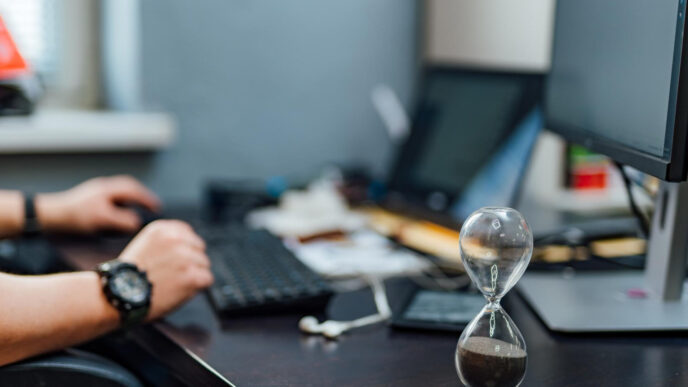Get Unstuck: The First Step to Better Decisions
Do you ever feel like your mind is spinning with options, yet none of them feel quite right? You’re not alone. In an age of limitless choices and constant input, making even simple decisions can feel like navigating a mental fog. Whether you’re choosing between two job offers, debating a move to a new city, or just trying to figure out what’s next in life — clarity often feels just out of reach.
But here’s the truth: clarity is not something you wait for — it’s something you create.
❓ Why Clarity Feels So Elusive
We often get caught in the cycle of:
- 🔁 Overthinking everything until we’re mentally exhausted
- 😰 Letting fear hijack our ability to choose
- 🎯 Searching for the “perfect” choice instead of a good one
- ❌ Avoiding action in case we pick the wrong path
This indecision drains focus, delays progress, and erodes confidence.
“In the absence of clarity, action becomes guesswork. But with clarity, each step forward gains purpose.”
If you’ve ever said “I just don’t know what to do,” what you’re really facing is not a lack of options — it’s a lack of structured thinking and self-trust.
✅ What This Guide Will Help You Do
This article is your action plan to:
- ✔️ Clarify confusion and make better decisions
- ✔️ Stop overthinking everything
- ✔️ Use proven decision-making strategies
- ✔️ Build the confidence to move forward without regrets
You’ll learn how to shift from mental clutter to clarity using practical tools, mindset shifts, and smart decision-making frameworks. No fluff. No vague advice. Just what works.
Let’s dive in and clear the fog — one step at a time.
Why Decision-Making Feels Overwhelming
The Paradox of Choice
In today’s world, we are bombarded with endless options—from what to eat for breakfast to which career path to follow. Psychologist Barry Schwartz coined the term “Paradox of Choice”, explaining that while having options is beneficial, too many can lead to stress, anxiety, and even decision paralysis.
✅ Solution: Limit choices by setting clear criteria for what matters most. Instead of evaluating every possibility, focus on the top three options that align with your priorities.
Emotional and Psychological Barriers
Decisions are not just logical—they are deeply tied to emotions. Fear of missing out (FOMO), self-doubt, and even past failures can cloud judgment, making it difficult to make confident choices.
✅ Solution: Recognize when emotions are interfering. Journaling your thoughts or talking to a mentor can help separate rational considerations from emotional roadblocks.
Fear of Failure and Perfectionism
Many people delay decisions because they fear making the wrong one. Perfectionists, in particular, struggle with taking action unless they are 100% certain of success.
✅ Solution: Adopt a growth mindset. Every decision provides learning opportunities, even if it doesn’t go as planned.
Practical Frameworks for Clarity
The 80/20 Rule: Prioritizing What Matters
The Pareto Principle, or 80/20 rule, states that 80% of outcomes come from 20% of efforts. This principle is a powerful decision-making tool, as it helps focus energy on the most impactful choices.
✅ Application: When overwhelmed by multiple options, ask: Which 20% of these choices will bring 80% of the desired outcome?
Decision Matrix: Structuring Your Thought Process
A decision matrix helps break down complex decisions by assigning a score to different factors (e.g., cost, time, impact).
| Criteria | Option A | Option B | Option C |
|---|---|---|---|
| Cost | 7 | 5 | 8 |
| Time | 6 | 9 | 5 |
| Impact | 9 | 7 | 6 |
| Total | 22 | 21 | 19 |
✅ Application: Assign values to each factor and select the highest-scoring option. values to each factor and select the highest-scoring option.
The 10/10/10 Rule: Long-Term Perspective
A simple but powerful approach by Suzy Welch, the 10/10/10 Rule asks:
- How will this decision affect me in 10 minutes?
- How will it affect me in 10 months?
- How will it affect me in 10 years?
✅ Application: Use this method to gain clarity on the long-term consequences of a decision.
Mental Strategies for Effective Decision-Making
Managing Anxiety and Overthinking
Overthinking often leads to paralysis. Instead of making a decision, we endlessly analyze pros and cons, leading to “analysis paralysis.”
✅ Solution: Set a deadline for the decision. If it’s a small decision, give yourself 5 minutes. If it’s a major life decision, set a specific date.
Intuition vs. Logical Analysis
While logic is crucial, intuition plays a significant role in decision-making. Studies show that experienced professionals often make their best decisions based on gut feelings.
✅ Solution: When stuck, ask yourself: What is my first instinct? If logic and intuition align, you have your answer.
The Role of Mindfulness in Decision-Making
Mindfulness helps center your thoughts, making decisions clearer and less emotionally charged.
✅ Solution: Practice deep breathing or a short meditation before making important choices.
Overcoming Decision Fatigue
Establishing Routines and Habits
Decision fatigue occurs when the brain gets overwhelmed by too many choices. Many successful people simplify their daily decisions (e.g., Steve Jobs’ black turtleneck uniform) to conserve mental energy for important choices.
✅ Solution: Automate minor decisions like meal planning or daily outfits to save mental bandwidth.
Simplifying Choices to Reduce Cognitive Load
When overwhelmed, narrow options to three. Research shows that people are more likely to make a choice when presented with fewer options.
✅ Solution: Limit choices and stick to a pre-set list of criteria.
The Power of “Good Enough” Decisions
Not every decision needs to be perfect. The “satisficing” approach, introduced by psychologist Herbert Simon, suggests choosing an option that meets key requirements without overanalyzing.
✅ Solution: Stop searching for the “perfect” choice—go with the first option that meets your main criteria.
Taking Action: Moving Forward with Confidence
Avoiding Analysis Paralysis
Instead of waiting for the “perfect” answer, focus on making a good decision and refining it later if needed.
✅ Solution: Implement a “test and iterate” approach—try a decision, assess the outcome, and adjust if necessary.
Trusting Your Decisions and Learning from Mistakes
Every decision brings experience. Even wrong choices lead to valuable lessons.
✅ Solution: Reflect on past decisions. Ask yourself: What did I learn? How will I apply this next time?
How to Course-Correct Without Regret
Sometimes, decisions don’t work out. That’s okay—adjust and move forward.
✅ Solution: Create exit strategies in case a decision needs revising. No choice is final.
Conclusion: Mastering Decisiveness for a More Focused Life
Clarity in decision-making isn’t about always choosing the perfect path—it’s about taking action with confidence. By using practical frameworks, managing decision fatigue, and embracing the learning process, you can navigate choices with ease.
Remember: Every decision moves you forward. Take the leap. ✔️
References and Inspirational Resources
- Schwartz, Barry. The Paradox of Choice: Why More Is Less. Harper Perennial.
- Welch, Suzy. 10-10-10: A Life-Transforming Idea. Scribner.
- Simon, Herbert A. Administrative Behavior: A Study of Decision-Making Processes in Administrative Organizations. Free Press.
- Psychology Today – Articles on decision-making, overthinking, and cognitive clarity.
- Harvard Business Review – Research-based articles on decision fatigue, confidence in choices, and mental frameworks for leaders.
- The Greater Good Science Center (UC Berkeley) – Insights on mindfulness, intuition, and psychological well-being.















